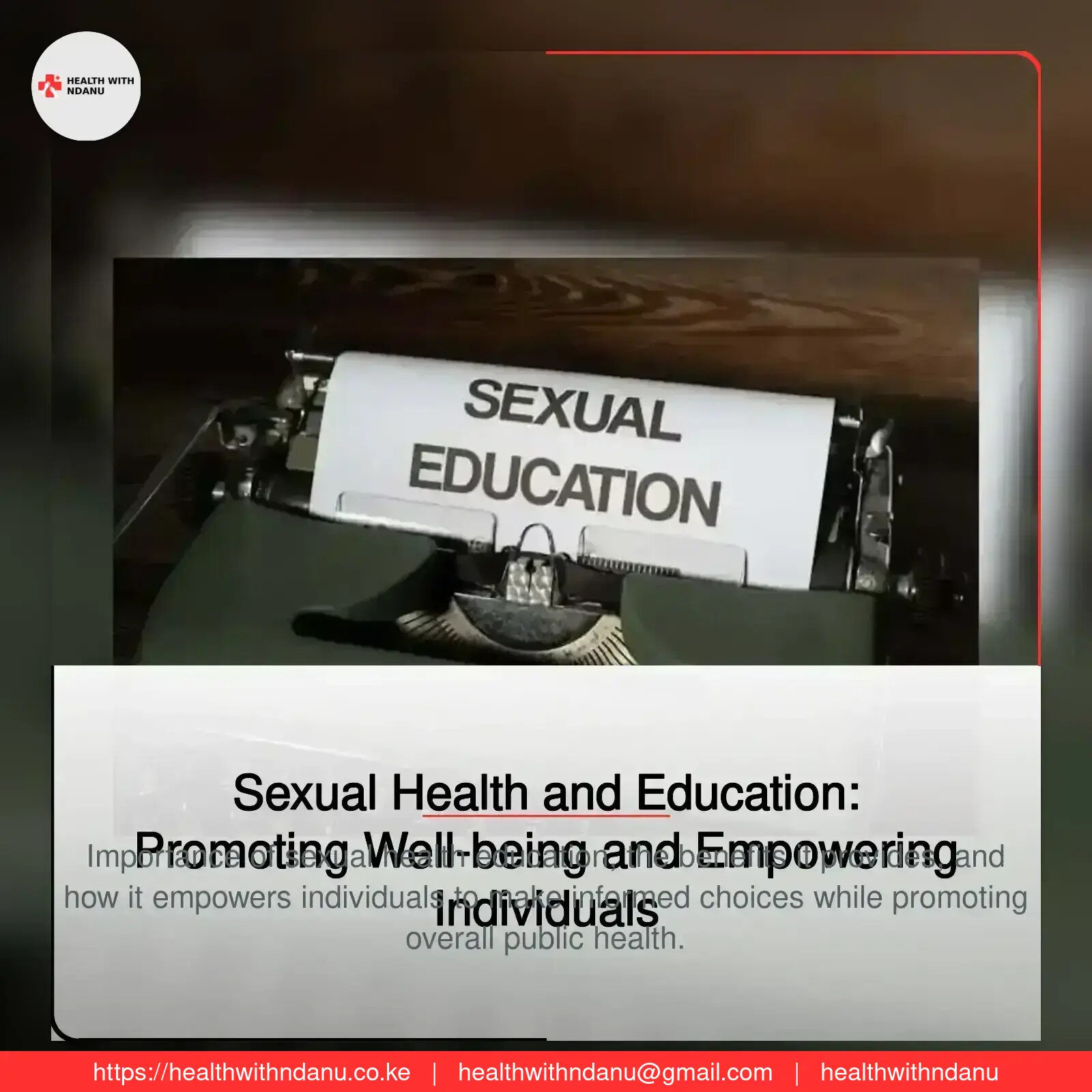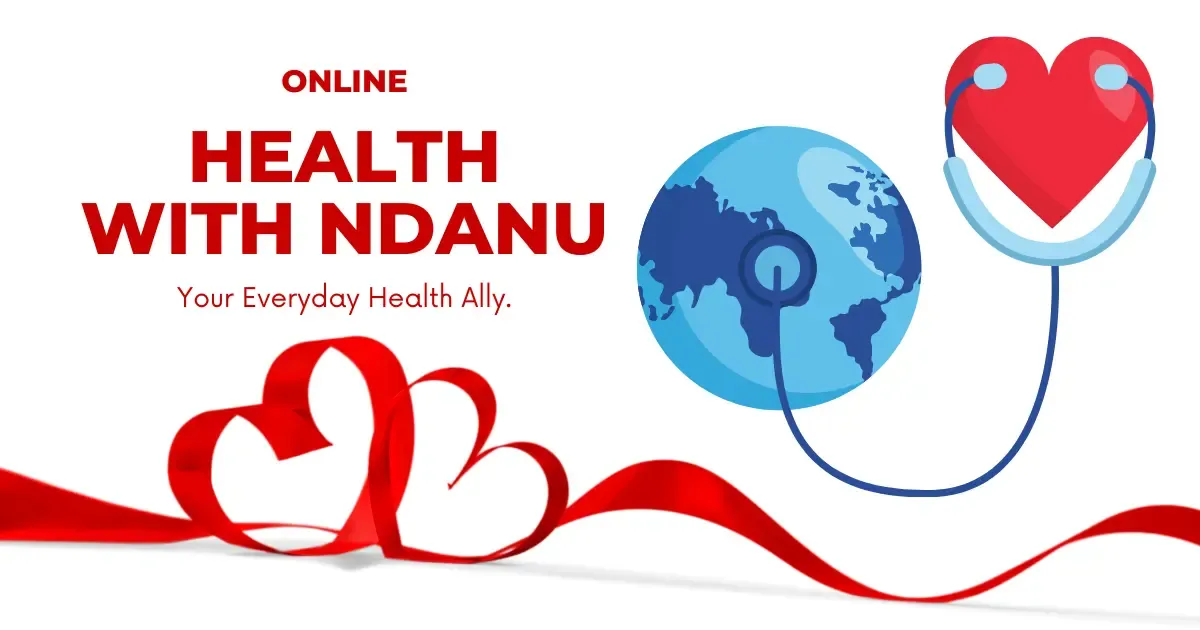Sexual Health and Education: Promoting Well-being and Empowering Individuals



Introduction
Sexual health and education are fundamental components of overall well-being. Informed individuals who understand their sexual health are better equipped to make decisions that positively affect their bodies, relationships, and future. Comprehensive sexual education (CSE) serves as a critical tool in promoting sexual health by providing accurate information, teaching safe practices, and fostering open discussions about sexuality. This article explores the importance of sexual health education, the benefits it provides, and how it empowers individuals to make informed choices while promoting overall public health.
What is Sexual Health?
Sexual health is a state of physical, emotional, mental, and social well-being in relation to sexuality. It involves a positive and respectful approach to sexual relationships, free from coercion, discrimination, and violence. According to the World Health Organization (WHO), sexual health requires access to sexual health services, information, and education, enabling individuals to make informed decisions about their sexual lives.
Key aspects of sexual health include:
- Physical Well-being: The ability to enjoy healthy sexual relationships and access to necessary healthcare services such as contraception, STI prevention, and reproductive health care.
- Emotional and Psychological Health: The emotional ability to engage in respectful and consensual relationships while maintaining a sense of self-worth and confidence in one's sexual identity.
- Social Well-being: The right to have a healthy relationship that is built on mutual respect, communication, and consent, free from violence or manipulation.
The Importance of Sexual Education
Sexual education is the foundation of sexual health. It provides individuals with the knowledge and skills necessary to navigate their sexual lives safely and responsibly. Comprehensive sexual education should be inclusive, age-appropriate, and reflect scientific facts rather than myths or cultural taboos.
1. Prevention of Sexually Transmitted Infections (STIs)
One of the core components of sexual education is the prevention of sexually transmitted infections (STIs). STIs such as HIV/AIDS, chlamydia, gonorrhea, syphilis, and herpes are a serious global health concern. By teaching about safe sex practices, the use of condoms, and the importance of regular STI testing, sexual education can significantly reduce the transmission of these infections.
For example, individuals who understand the risks associated with unprotected sex and the proper use of contraception are more likely to take the necessary steps to protect their health and that of their partners.
2. Reducing Unintended Pregnancies
Another critical aspect of sexual education is contraception. Providing individuals with information about different types of contraception, such as birth control pills, intrauterine devices (IUDs), condoms, and emergency contraception, enables them to make informed decisions about family planning. This knowledge reduces the number of unintended pregnancies and allows individuals to take control of their reproductive health.
Sexual education empowers individuals, especially adolescents, to understand their rights to make choices about their sexual lives, which in turn fosters healthier and more responsible relationships.
3. Fostering Healthy Relationships
Sexual education is not just about the physical aspects of sex but also about teaching respect, consent, and communication. By addressing emotional intelligence and mutual respect, sexual education fosters healthy, fulfilling, and consensual relationships. Education about consent is particularly vital in reducing instances of sexual assault and harassment, as it encourages individuals to understand and respect their partner’s boundaries and desires.
Comprehensive sexual education also promotes gender equality by teaching individuals about the importance of mutual respect and non-violence in relationships, regardless of gender or sexual orientation.
The Role of Comprehensive Sexual Education (CSE)
Comprehensive sexual education goes beyond the basics of reproduction. It provides young people with a broad understanding of their sexual health, from puberty to intimate relationships, and covers topics such as consent, gender identity, sexual orientation, and emotional well-being.
CSE is crucial because it provides evidence-based information that helps individuals make informed choices about their health, bodies, and relationships. A well-structured sexual education program can:
- Educate students about the biological, emotional, and psychological aspects of sex.
- Encourage open discussions about sexuality and sexual rights.
- Promote safe, healthy sexual practices and relationships.
- Teach individuals how to navigate the digital landscape regarding sexuality and online safety.
- Offer information on resources for support in cases of sexual abuse, harassment, or unsafe relationships.
Benefits of Sexual Health Education
1. Informed Decision-Making
Sexual education equips individuals with the knowledge they need to make responsible decisions regarding their sexual health. Understanding the consequences of unsafe sexual practices helps individuals to prevent unwanted pregnancies and protect themselves from STIs, including HIV.
2. Reduced Gender-based Violence
By teaching respect, consent, and healthy communication in relationships, sexual health education plays a key role in reducing gender-based violence (GBV). It also addresses the importance of consent, which is central to preventing sexual assault and harassment.
3. Promoting Gender Equality
Comprehensive sexual education fosters gender equality by challenging harmful stereotypes and teaching about the diverse sexual orientations and gender identities that exist. It also promotes inclusivity and acceptance of LGBTQ+ individuals, which helps reduce discrimination and bullying based on sexual orientation or gender identity.
4. Better Sexual and Reproductive Health Outcomes
Individuals who receive sexual education are more likely to seek regular check-ups, use contraception, and engage in safer sexual practices, leading to better sexual and reproductive health outcomes. Sexual health education also contributes to mental well-being, as it helps individuals understand their emotions and sexual desires in a safe and supportive environment.
Challenges in Implementing Sexual Health Education
While the importance of sexual health education is clear, there are several challenges that hinder its implementation worldwide:
1. Cultural and Religious Barriers
Cultural and religious beliefs can sometimes conflict with the teaching of comprehensive sexual education. In some regions, sexual education is seen as taboo or inappropriate. These cultural barriers can limit young people's access to vital sexual health information and delay their ability to make informed decisions.
Sexual health advocacy must therefore focus on changing societal attitudes and ensuring that education is inclusive, accurate, and culturally sensitive. It is also essential to engage communities in dialogue to understand their concerns and create educational programs that respect local values while upholding universal sexual rights.
2. Lack of Training for Educators
In many regions, there is a lack of adequately trained teachers who can deliver effective sexual health education. Teachers may feel uncomfortable discussing sensitive topics such as contraception, sexual orientation, and consent, or may not have access to up-to-date information.
Training teachers and educators is critical to ensuring that sexual education is delivered effectively. Advocacy groups and governments must invest in professional development for educators to ensure they can confidently and accurately provide sexual education.
3. Limited Access to Resources
In some parts of the world, there are limited resources available to support sexual health education. This includes insufficient funding for educational programs, a lack of teaching materials, and inadequate access to sexual health services.
Increasing access to sexual health resources, including funding for educational programs and outreach initiatives, is essential to ensuring that everyone, especially young people, can access the information they need to lead healthy, informed sexual lives.
How to Promote Sexual Health and Education
There are several steps that individuals, communities, and governments can take to promote sexual health education and ensure that everyone has access to accurate information about their sexual rights and well-being.
1. Integrating Comprehensive Sexual Education into School Curricula
Governments and educational systems must prioritize sexual education as part of the standard curriculum, ensuring that young people receive accurate, inclusive, and age-appropriate information about sexual health.
2. Public Awareness Campaigns
Governments and advocacy organizations can launch public awareness campaigns to promote the importance of sexual health education and encourage individuals to seek information and support. These campaigns can address key issues such as consent, contraception, and STI prevention.
3. Engaging Communities in Dialogue
Community engagement is essential in ensuring that sexual health education meets the needs of diverse populations. It is important to involve parents, religious leaders, and other community stakeholders in conversations about the benefits of sexual health education and how it can be implemented effectively.
4. Supporting Youth-Led Initiatives
Empowering young people to take charge of their sexual health is crucial for promoting long-term behavioral change. Youth-led initiatives that provide peer education and support can help increase awareness about sexual health and create safe spaces for open dialogues
Conclusion
Sexual health and education are fundamental to promoting overall well-being and empowering individuals to make informed decisions about their bodies, relationships, and sexual lives. Comprehensive sexual education helps prevent STIs, reduces unintended pregnancies, and fosters healthy relationships based on mutual respect and consent. Despite the challenges, it is crucial to prioritize sexual health education at all levels, from schools to community programs, to ensure that individuals have the knowledge and resources they need to live healthy, fulfilling lives. By continuing to advocate for sexual health education, we can work towards a world where everyone has the opportunity to make empowered, informed choices about their sexual health.
Una uzoefu wako? Shiriki nasi
Popular Categories
Most Visited Blogs
Daily Newsletter
Get all the top stories from Blogs to keep track.



